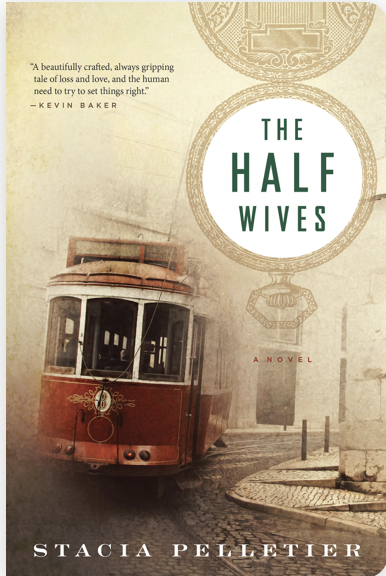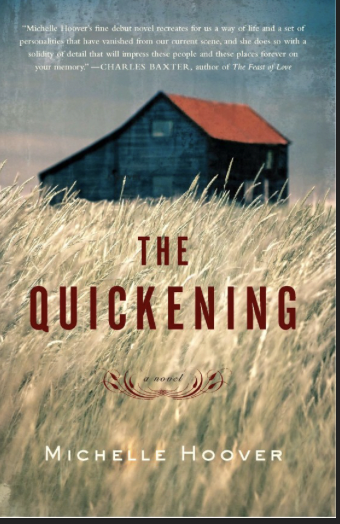
Recent Reviews

The Violin Conspiracy
‘The Violin Conspiracy’ is a page-turner—a “who done it” mystery like a Walter Mosley or John Grisham novel. Instead of who killed the victim, the question is, who stole the violin? And not just any violin, but a rare, valuable Stradivarius violin made in the 19th century. This is Brendan Slocum’s debut novel, and it is a great read.
The novel opens in a hotel room in NYC. We meet talented violinist Rayquil McMillan. Ray is Black and one of the finest musicians in the world. He has worked relentlessly and overcome many obstacles. He is days away from flying to Moscow to compete in the Tchaikovsky competition when his violin is stolen. The violin had become his prized possession well before it was appraised at over $10 million. His grandmother had given it to him when he was young. Ray loved the sound he created and the feeling that emanated when he played classical pieces.
As the pages turn, the reader begins to witness the persistence of prejudice, even in the classical music world. “You work twice as hard. Even three times. For the rest of your life. It’s not fair, but that’s how it is. Some people will always see you as less than they are. So, you have to be twice as good as them.” Though mysteries are generally not my genre, this glimpse into the world of a Black classical musician seemed noteworthy.
Once the worth of his beat-up violin becomes known, members of his unsupportive family assert that it is their instrument. And the descendants of the white slave owner who initially owned the violin say the same.
The novel traces the chain of events leading to the theft while describing Ray’s journey from a small boy to a stunning virtuoso. He is underestimated and ostracized by fellow musicians and arrested while driving to perform with a symphony in the South. He tries to stay positive, but he feels, “No matter how nice the suit, no matter how educated his speech or how strong the handshake, no matter how much muscle he packed on, no matter how friendly or how smart he was, none of it mattered at all. He was just a Black person. That’s all they say, and that’s all he was.”
I rooted for Ray on every page and admired his resiliency. Though the mystery of who stole the violin is the book’s focus, the themes around bigotry, classical music, and family loyalty are compelling and provocative. Slocum’s debut novel reverberates long after the story ends. 4/5

The Half Wives
I do love a book set in San Francisco. Hometown pride, I suppose.
Written by Stacia Pelletier and published in 2017, ‘The Half Wives’ is gripping and even hypnotic. Pelletier’s evocative descriptions of turn-of-the-century San Francisco are so immersive that the City feels like another character. It does take a couple of chapters to acclimate to the second-person narrator. But as the complex emotion of the characters emerge, the story crescendo toward a sad but satisfying conclusion.
The entire novel takes place on May 22, 1897. It was on May 22, sixteen years ago on that day that Henry and Marilyn Plageman’s 2-year-old son Jack died. Marilyn and Henry commemorate their son’s death yearly with a ritual at the San Francisco cemetery on Lone Pine Hill. But this year threatens to be different. The City of San Francisco intends to move the graves to Colma, a new cemetery south of the City. Because of the sweeping ocean views, the City believes the current cemetery could be used for homes and businesses. Jack knows that Marilyn can’t bear the thought of moving Jack to a new plot of land. So, Henry does what he can to stop the move. (Read the author’s note at the end of the book first. She explains how most San Francisco cemeteries were moved to Colma.)
After Jack’s death, each privately mourned Jack. Marilyn focused on charity work for an orphanage. And Henry started a relationship with a woman named Lucy, with whom he has a ten-year-old named Blue. He stays with them once a week.
Jack and Marilyn love one another. But like the San Francisco fog, Jack’s death hovers over them. His death is like an invisible string that connects them and restrains them from processing the reason Jack died. ‘The Half Wives’ is a unique and engaging read.

The Quickening
‘The Quickening’ was hard to put down. Michelle Hoover’s lyrical writing, compelling characters, and dramatic setting create a palpable tension. It is a story about two families struggling to survive on the isolated Midwest plains. As the families begin to rely on one another, mutual resentments accumulate. Using language as sparse as the plains, Hoover’s emotionally charged novel transports us to a time, place, and dialect that no longer exists.
In 1913 Mary Morrow walked the mile to meet her new neighbor. She longed for a friend. She had been raised in a city. It was where she met her abusive husband, Jack. On this vast prairie, only one friendship option exists. Her name is Edinan Current. Edina and Mary’s temperaments couldn’t be different. Edinan is content farming alone or with her gentle husband, Frank. Except for a church that plays a part in the story, these folks could be living on the moon. The book explores Edwina and Mary’s internal worlds and reveals their different fortitudes, attitudes, and character. Life proceeds over the years, and they help one another through miscarriages, hurt children, sick animals, failed crops, the Great Depression, a fire, encroaching poverty, and more isolation. Edinia and Mary have secrets; some are known to the other but never acknowledged. These families are intertwined not out of mutual admiration but by circumstance. Eventually, betrayal rears its ugly head. These two women make decisions that affect their families and the next generation.
The book is an homage to the families that farmed in isolation their 180 acres thanks to the Homestead Act. Feelings are not shared. People are tight-lipped and private. Hoover’s use of metaphors, simile, and allegories are breathtaking. Words are not wasted, and meaning exists in the words not written. This powerful story is about the emotional toll of hard work and heartache on two farmwives and their families as they toil on the Midwest plains. 4.5/5
